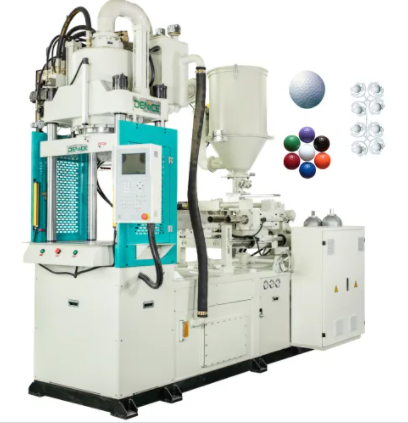How does a golf ball making machine work?
In the world of sports, precision and technology often intersect to create superior performance. This is evident in the realm of golf, where every detail matters – even down to the design and construction of the golf ball itself. Modern golf ball making machines have revolutionized the way these small, dimpled spheres are crafted, ensuring consistency, accuracy, and optimal performance on the green. In this article, we'll delve into the intricacies of how a golf ball making machine works, shedding light on the processes that produce the iconic golf ball we know today.
The Art and Science of Golf Ball Construction:
While the core concept of a golf ball – a small, spherical object meant to be hit with a club – might seem simple, its construction involves a delicate balance of materials, design, and engineering. Golf ball making machines play a pivotal role in achieving this balance, turning raw materials into a precise and high-performance final product.
Step 1: Core Formation:
At the heart of every golf ball lies its core, which contributes to its bounce, feel, and overall performance. The core is usually made from a combination of synthetic rubber and other materials, carefully mixed to achieve specific properties.
Material Preparation: Raw materials are combined in precise ratios to create the core mixture. This mixture can be tailored to achieve desired characteristics, such as compression, spin rate, and launch conditions.
Core Formation: The core mixture is then processed through the golf ball making machine. Depending on the type of machine, the core might be molded, compression-molded, or injected into a mold to achieve the desired shape and consistency.
Step 2: Layering and Covering:
Modern golf balls typically have multiple layers, each contributing to different aspects of performance. The outermost layer, or cover, is responsible for controlling spin, durability, and the ball's feel upon impact.
Layer Application: The layers are created using a combination of materials, such as ionomer resins, urethane, or blends of both. These materials are heated, molded, and applied to the core using precision processes.
Dimple Patterning: The cover is then dimpled with a specific pattern that affects the ball's aerodynamics. This dimple pattern is critical in determining the ball's trajectory, stability, and lift during flight.
Step 3: Machine Precision:
Golf ball making machines are engineered to ensure a high level of precision and consistency throughout the manufacturing process. These machines leverage advanced automation, computer-controlled systems, and quality control measures to achieve optimal results.
Automation: Machines handle various tasks, such as material mixing, molding, layer application, and dimpling, with minimal human intervention. This minimizes variability and ensures uniformity.
Computer-Controlled Processes: Modern machines are equipped with sophisticated computer systems that monitor and adjust parameters like temperature, pressure, and molding times. This level of control enhances the repeatability of the manufacturing process.
Quality Control: Throughout the production process, golf ball making machines incorporate quality control mechanisms. Vision systems and sensors detect inconsistencies or defects, allowing for real-time adjustments and minimizing the production of flawed balls.
Step 4: Testing and Performance Evaluation:
Before golf balls are packaged and ready for the market, they undergo rigorous testing to ensure they meet quality and performance standards.
Performance Testing: Golf balls are tested for factors such as compression, spin rate, and launch characteristics. These tests help categorize balls into different performance categories, catering to players of varying skill levels.
Durability Testing: Machines simulate the impact and conditions golf balls endure during play, ensuring that the balls are durable and can withstand the rigors of the game.
Step 5: Packaging and Distribution:
Once golf balls have been manufactured, tested, and deemed suitable for play, they are packaged and prepared for distribution. Packaging varies based on brand, product line, and market.
Customization: Some golf ball making machines offer customization options, allowing for the inclusion of branding, logos, and player-specific markings on the balls.
Batch Sorting: Golf balls are sorted into batches based on their performance characteristics. This sorting ensures that players receive balls with consistent attributes, promoting fairness and uniformity during play.
In Conclusion:
The evolution of golf ball making machines has significantly transformed the golfing landscape. Through a meticulous process that involves core formation, layering, machine precision, testing, and packaging, these machines produce golf balls that are engineered for consistent performance and optimal playability. Whether you're a professional golfer seeking maximum control or an amateur looking for distance and forgiveness, the golf ball making machine's intricate mechanics contribute to the perfect balance of technology and sport, ultimately enhancing the experience of every golfer who steps onto the green.




